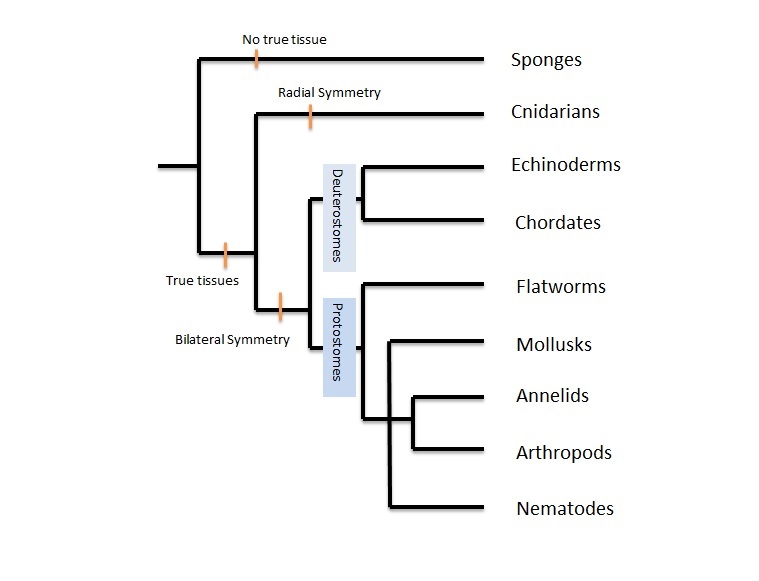How is Phoenicopterus chilensis classified?
Domain:
Eukarya. Organisms in this domain
have all eukaryotic cells. This means that the cell(s) in these
organisms contain a nucleus and membrane bound organelles. The
name eukarya comes from eukaryotic cell of all organisms in this
domain.
Kingdom:
Animalia. In this kingdom, the organisms
are multicellular. In general, animals are heterotrophs and
obtain their energy from ingesting other organisms. Animals lack
a cell wall, which allows for greater mobility. Animals also
ingest and then digest their food sources. The majority of
animals reproduce sexually and the diploid (2n) stage is
dominant. In the case of the Chilean Flamingo, it does not act
as an exception and contains the typical Animalia traits. The
word Animalia refers to the word animals (Encyclopedia of Life
2011). To check out some other cool animals, be sure
to look at the
Walrus and the
Red Milkweed Beetle!
Phylum:
Chordata. Organisms that are
chordates all have bilateral symmetry to some degree (Cain et
al. 2008). Chordates
also have triploblasty (Cain et al. 2008). This means they have three different
types of biological tissues (Cain et al. 2008). These tissues are ectoderm,
endoderm and mesoderm. The ectoderm contains the outer covering
of the animal and the central nervous system (Cain et al.
2008). The endoderm
contains the digestive system and is the innermost layer of
tissue (Cain et al. 2008). The mesoderm is the middle layer that is the muscles,
skeleton and circulatory system (Cain et al. 2008). Chordates also are
deuterostomes. Deuterostomes are organisms which, in embryonic
growth, the anus develops before the mouth (Cain et al. 2008). Another
characteristic of the chordates is that they all have some sort
of notochord. A notochord is a hollow nerve cord that is along
the dorsal side of the animal (Cain et al. 2008). The chordates are named after
this notochord (Cain et al. 2008). Some other examples of
chordates are the
Common dolphin and the
Dusty Leaf Monkey!
Class:
Aves. Organisms that are in the
class Aves, all have the defining synapomorphy of feathers
(Cheasapeake College).
These organisms, more well-known as birds, also have some other
features that define most of this class. Their forelimbs are
wings and they have keratin beaks (Cheasapeake College). Aves also have hollow and
light weight bones, to help make flying easier (Cheasapeake
College). Most birds in
Aves have the ability to fly, including Phoenicopterus
chilensis. In English, the word Aves means bird. The
list of other forms of birds are endless, but two Aves that we
found that were specifically interesting were the
Harpy Eagle
and the
American Dipper.
Order:
Phoenicopteriformes. The order
of Phoenicopteriformes consists of wading water birds,
which is also the English definition of the Latin root (Wildlife
Junior Journal 2014, Oxford Dictionary 2014).
They are all approximately three to five feet in height with
long leg, necks and beaks (Wildlife Junior Journal 2014). These birds are usually pink, red or
white in coloration. Also, these birds are filter feeders that
generally eat algae and small crustaceans (Wildlife Junior
Journal 2014). For more information regarding the order of
Phoenicopterus chilensis, check out the
Wildlife Junior Journal!
Family:
Phoenicopteridae. Phoenicopteridae consists of
all known flamingo species. The organisms within
Phoenicopteridae are bird that inhabit marine aquatic
environments and breed in large colonies (Ferrari et al. 2014). When compared to other
water birds, these birds have long life spans (Ferrari et al.
2014). They are capable
of traveling very long distances. Sometimes, there is even great
distances between their individual nesting and feeding sites
(Caziani et al. 2007).
Genus:
Phoenicopterus. This genus
includes three species of flamingos. This includes
Phoenicopterus ruber (Caribbean Flamingo), Phoenicopterus
roseus (Greater Flamingo), and Phoenicopterus chilensis
(Chilean Flamingo). These birds have a few things in common;
their bill morphology and the way the feed are very similar.
Species:
Phoenicopterus chilensis.
As mentioned above in the previous category,
Phoenicopterus means purple wing (Oxford Dictionary 2014). Chilensis means
Chilean, which is strange because the majority of their
populations don’t reside in Chile. One major distinction between
the Chilean Flamingo and the other species of flamingos is their
bill shape and length (Kravitz et al. 2002). On average, the bill of this flamingo is
larger than the other flamingos. Their bill shape is
banana-like, but faced downwards (Kravitz et al. 2002).
S


